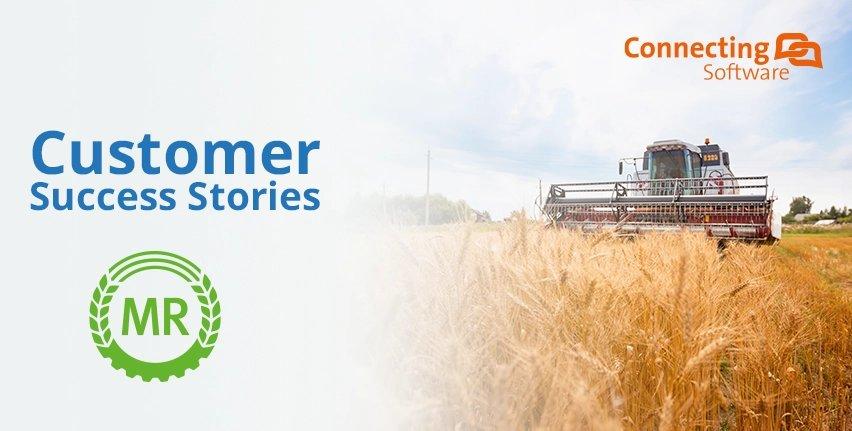
Preventing Sensitive Data Exposure in SharePoint: Lessons from a German Agricultural Association
Customer: Maschinenringe
Activity: Agricultural services
Country: Germany
Users: 140
Size: The Maschinenringe network as a whole has over 190,000 members
Product Application: CB Dynamics 365 to SharePoint Permissions Replicator
When internal innovation introduces external risk, how quickly and smartly you respond can define your long-term security posture.
That’s exactly what happened at Maschinenringe, a leading German agricultural association, when they identified a potential risk with their new internal social intranet application. The app connected users to SharePoint documents that were supposed to be accessible only through Dynamics 365, which could mean sensitive internal content was at risk of exposure—until Maschinenringe made a decisive move to close the gap.
Let’s break down what happened, how they solved it, and what your organization can learn from their approach.
The Vulnerability: SharePoint as a Potential Open Backdoor
Maschinenringe had followed all Microsoft recommendations when setting up the integration between Dynamics 365 and SharePoint. They had decided that employees would access documents through Dynamics only, so that the access rules defined in Dynamics would be enforced and only users with the necessary permissions would be able to access sensitive files.
But a new intranet app changed the rules.
By connecting directly to SharePoint, this app would give employees access to document libraries they were never supposed to see. And because SharePoint permissions are not automatically synced with Dynamics roles, the gates would effectively be open to all SharePoint users.
This was simply not an option as Leander Kirner, Team Lead CRM & Reporting at Maschinenringe explained. "There was a lot of sensitive data and documents," he said.
This scenario is not uncommon. Many organizations rely on the default Dynamics-to-SharePoint integration, assuming permissions will carry over as both systems are Microsoft, and the integration itself is Microsoft. They don’t. Without a solution to bridge that permissions gap, companies risk unintentional data leakage, especially when other platforms tap into SharePoint content directly.
The Smart Move: Automate Permission Replication
Recognizing the stakes, Maschinenringe took action fast. They wanted a tool that could automatically mirror Dynamics permissions onto SharePoint files.
Curiously, when they contacted their IT partner ORBIS about this, their recommendation for this exactly matched what they had found by researching themselves – CB Dynamics 365 to SharePoint Permissions Replicator from Connecting Software.
Moving on together with their well-known partner, they found implementation wasn’t just fast—it was straightforward. "We already had all of the requirements here," noted Kirner, explaining that they "formulated requirements for different entities because there were different permissions for different user roles and so on—and the solution just fit."
The Results: Security Without Overhead
The results speak for themselves:
- No unauthorized SharePoint file access
- No need for manual permission handling
- No support tickets over a full year of operation
Kirner calls the solution a “silent worker in the background”—one that does its job without creating noise, delays, or distractions.
That’s the kind of automation most IT teams dream about.
Key Takeaways for IT Leaders
- Assume nothing is secure by default.
Microsoft’s integration between Dynamics and SharePoint doesn’t include permission alignment. Maschinenringe resolved this permissions gap before it became an issue. Follow their lead: never rely solely on default settings; always verify your security configurations end-to-end. - Plan for the ripple effect of new tools.
A potential vulnerability emerged at Maschinenringe with the introduction of a new internal application, but it was identified and addressed before it became an issue. This highlights the importance of regularly reviewing your security model when new systems are integrated. - Automate before it becomes urgent.
Maschinenringe acted before a breach occurred. This type of forward-thinking decision saved them from both regulatory risk and internal disruption.
Want to See How It Works?
The full success story is available as a downloadable PDF. If there is some extra detail you would be interested in, or you want to see how this works in practice, check our Connecting Software in Action videos or reach out for a personalized demo.
If your Dynamics is integrated with SharePoint or any new platforms are entering your environment, Maschinenringe’s experience should raise one big question:
Are your permissions still aligned?
Let’s talk.
Connecting Software has been providing software solutions to synchronize data and connect enterprise systems for over two decades. It serves over 1000 customers globally, particularly in highly regulated sectors such as finance, public service, and defense.
Connecting Software’s solutions work automatically in the background to increase productivity, improve security, and ensure compliance. They easily connect with popular business applications like Microsoft Dynamics, O365/M365, SharePoint, and Salesforce. They also incorporate proven, cutting-edge technologies such as blockchain for data integrity and authenticity, and data diodes for unidirectional secure data transfer in sensitive environments. This strategic application of advanced technologies ensures effectiveness and reliability for clients’ critical operations.
Connecting Software s.r.o. & Co. KG
Gumpendorfer Straße 19
A1060 Wien
Telefon: +43 (1) 3707200
http://www.connecting-software.com
PR Lead
E-Mail: elliot@connecting-software.com
![]()



